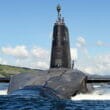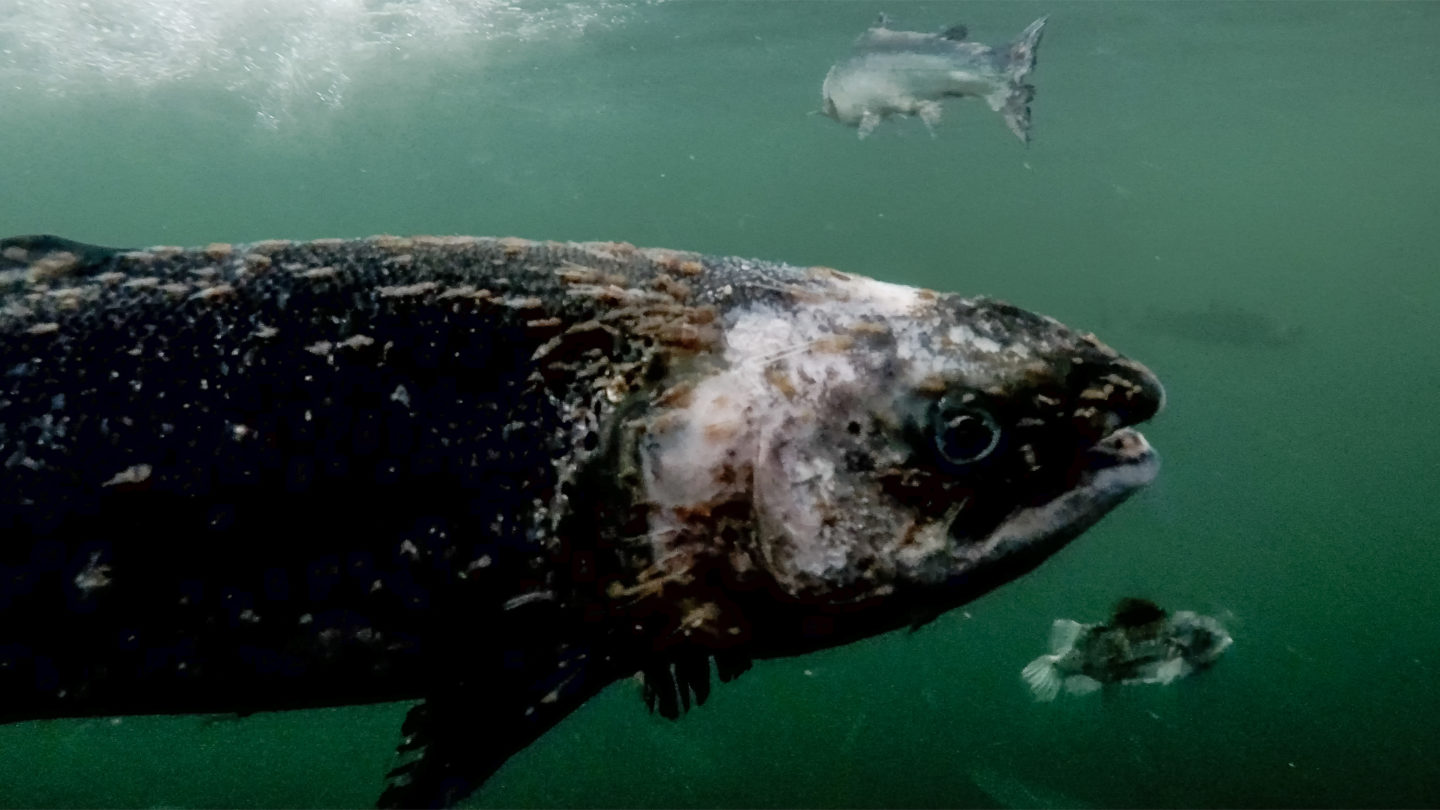Nineteen fish farms on lochs along the west coast of Scotland have been identified as posing the most risk to endangered wild salmon by infecting them with sea lice.
The Scottish Environment Protection Agency (Sepa) has named the farms, run by two multinational salmon farming companies, with the “highest relative risk” of spreading lice to wild fish and killing them.
In December 2023 wild Atlantic salmon were internationally classified as endangered, with evidence that global populations fell by 23 per cent between 2006 and 2020. According to government scientists, lice from fish farms is one of the causes of the decline.
But controls on lice numbers at salmon farms proposed by Sepa have been condemned as “laughable” and “greenwashing” by campaigners. They warned that instead of saving wild salmon, Sepa could help drive them to extinction.
Sepa maintained its proposals were “a crucial step forward”, and used a “proportionate, evidence-based regulatory approach” to protect wild salmon. They would aid the “sustainable development” of fish farms in Scotland, it said.
Salmon farming companies criticised Sepa’s plans, insisting their farms were well managed to ensure “low risk” to wild salmon. One said it was “incorrect” to infer that the 19 farms were harming wild salmon, and another attacked the views of campaign groups as “grossly misplaced and myopic”.
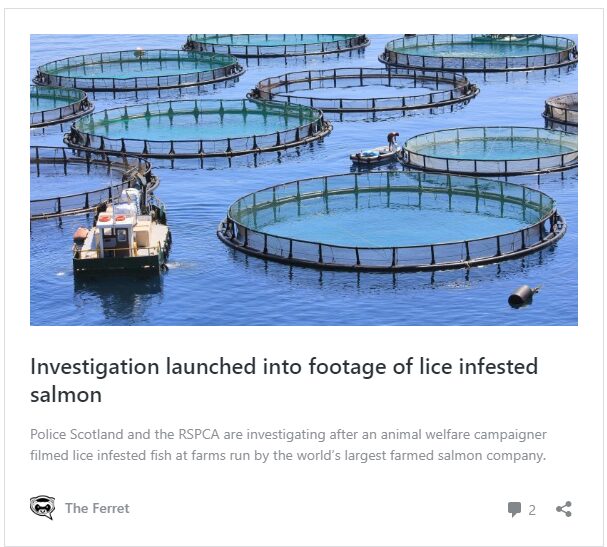
Thousands of salmon caged in sea lochs can be infested by lice, which can escape and attach themselves to wild salmon and trout as they swim past. The damage this does to wild fish has long been a source of concern and argument.
In 2018 an inquiry by the Scottish Parliament concluded that the regulation of fish farms must be improved. In response the Scottish Government set up the Salmon Interactions Working Group, which in turn led to Sepa being put in charge of controlling lice from fish farms.
Sepa has since run two public consultations on its plans, the first in 2021 and the second in 2023. It described the responses it received as “highly polarised”, with the fish farming industry questioning the need for tougher regulation and environmental groups demanding it.
Sepa’s latest report was published in December 2023, and outlined revised plans for monitoring and controlling sea lice numbers. It mapped out eight protection zones on the west coast and the Isle of Harris where wild salmon migrate past fish farms.
Sepa said no action was required at 103 of the 164 farms it assessed because they posed the “lowest risk” to wild salmon. For other farms with higher risks, it planned to introduce new controls aimed at ensuring that sea lice numbers do not increase.
“We will require appropriate action by operators of relevant higher relative risk farms as soon as we have sufficiently robust evidence that a reduction in sea lice concentrations is necessary to improve the condition of a wild salmon population,” Sepa said.
“We expect it to take around five years to carry out the modelling and monitoring work necessary to generate this evidence. If we obtain suitable evidence sooner, we will act on it without delay.”
The 19 fish farms putting wild salmon at risk
| Fish Farm | Company |
|---|---|
| Bagh Dail nan Ceann North and South, Loch Shuna | Mowi |
| Camas an Leim, Upper Loch Torridon | Mowi |
| Loch Duich, Ross-shire | Mowi |
| Gorsten, Loch Linnhe | Mowi |
| North Kilbrannan, Kilbrannan Sound | Mowi |
| Poll na Gille, Loch Melfort | Mowi |
| Portnalong, Loch Harport | Mowi |
| Rubh an Trilleachain, Shuna Sound | Mowi |
| Scalpay, Isle of Skye | Mowi |
| Noster, Loch Seaforth | Mowi |
| Seaforth, Loch Seaforth | Mowi |
| Trilleachan Mor, Loch Seaforth | Mowi |
| Soay Sound, Isle of Harris | Mowi |
| Ardcastle, Loch Fyne | Bakkafrost |
| Ardgaddan, Loch Fyne | Bakkafrost |
| Meall Mhor, Loch Fyne | Bakkafrost |
| Strondoir Bay, Loch Fyne | Bakkafrost |
| Tarbert South, Loch Fyne | Bakkafrost |
| West Strome, Loch Carron | Bakkafrost |
In annex II on page 110 of its report, Sepa for the first time named 19 fish farms which “initial screening indicates may be in the highest relative risk category”. The majority – 13 – are run by the Norwegian company, Mowi, with the remaining six operated by the Faroese firm, Bakkafrost.
The farms are sited along the west coast in Loch Fyne, Loch Linnhe, Loch Carron, Loch Torridon and around the isles of Skye and Harris. Most of them are certified by the international Aquaculture Stewardship Council which promotes “responsible” fish farming.
According to Sepa, the 19 farms had “the potential to make the largest contributions to sea lice levels” in areas where wild salmon required protection. “Further evidence is needed to determine if wild salmon are being impacted,” it added.
Wild salmon are “in crisis” with populations in the North Atlantic plummeting from 8-10 million in the 1970s to an estimated three million today, Sepa said. It blamed the decline on invasive species, river barriers, climate change and fish farming.
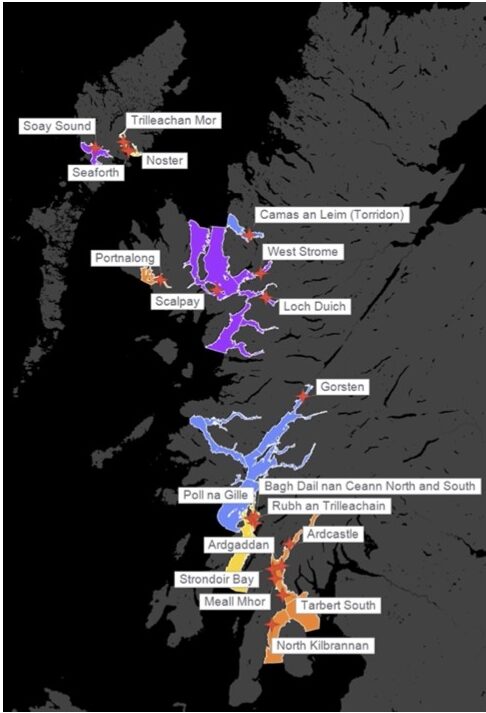
The campaign group, WildFish, pointed out that it’s been six years since the Scottish Parliament called for action. “It’s staggering that Sepa has now identified 19 farms that are operating in Scottish waters, with sea lice levels that are at high risk of causing harm to wild salmon,” WildFish Scotland’s director, Rachel Mulrenan told The Ferret.
“Any suggestion that this is the best we can do to protect one of Scotland’s most iconic species is laughable. At this point in time, and for at least another year, Sepa’s proposed sea lice regulations will not apply to any salmon farms in Scotland,” she said.
“This is not regulation that aims to protect wild salmon. It is regulation designed to give the illusion of acting to protect wild salmon, while business continues as usual for the salmon farming industry.”
It amounted to “greenwashing”, Mulrenan claimed. “At the very minimum Sepa should implement a strict, year-round sea lice limit on these farms, in line with international best practice.”
19 fish farms ‘just the tip of the iceberg’
The Coastal Communities Network, which brings together 26 groups in Scotland keen to protect the marine environment, accused Sepa of failing to take the urgent action demanded by MSPs.
“Instead of preventing further deterioration of wild salmon and sea trout, as Sepa claims, its approach is likely to help seal their fate,” said the network’s John Aitchison.
The 19 high risk farms were “just the tip of the iceberg”, he argued. Sepa was not planning any action against most farms, he said, although they all discharged lice into the open sea.
The Scottish Greens warned that too many fish farms were failing. “A lot of us are deeply concerned about the conditions in and around salmon farms and the lack of progress in tackling them,” said Green MSP, Ariane Burgess.
“It is welcome that these sites have been named, but that is not enough. As the Bute House Agreement that took Scottish Greens into government said, the status quo of aquaculture regulation is not an option.”
In December 2023 Burgess wrote to rural affairs minister, Mairi Gougeon, expressing “strong concern about the slow pace of reform of the fish farming industry”.
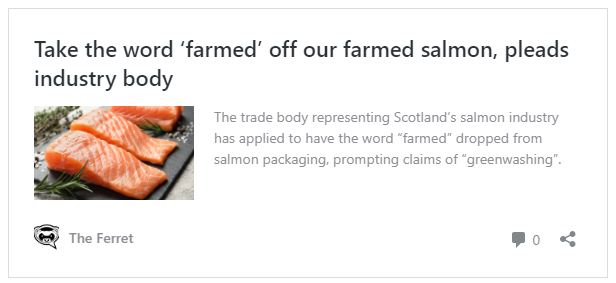
Mowi insisted there was no evidence that its fish farms harmed wild salmon. “Sepa has acknowledged that its preliminary screening model overestimates risk by more than a factor of three and does not suggest any farm is causing an adverse effect on wild salmon populations,” said a company spokesperson.
“With this precautionary approach in mind, Mowi believes that the 13 farms identified in the preliminary screening are well-managed to ensure low risk to wild salmon, and we will continue to provide Sepa with key scientific data to assist in refining the predictive models and risk profile for these farms.”
The spokesperson added: “The opinions of large campaigning organisations such as WildFish seem grossly misplaced and myopic. Our company will continue to collaborate closely with local wild fisheries interests that are in the best position to understand all pressures affecting wild salmon populations.”
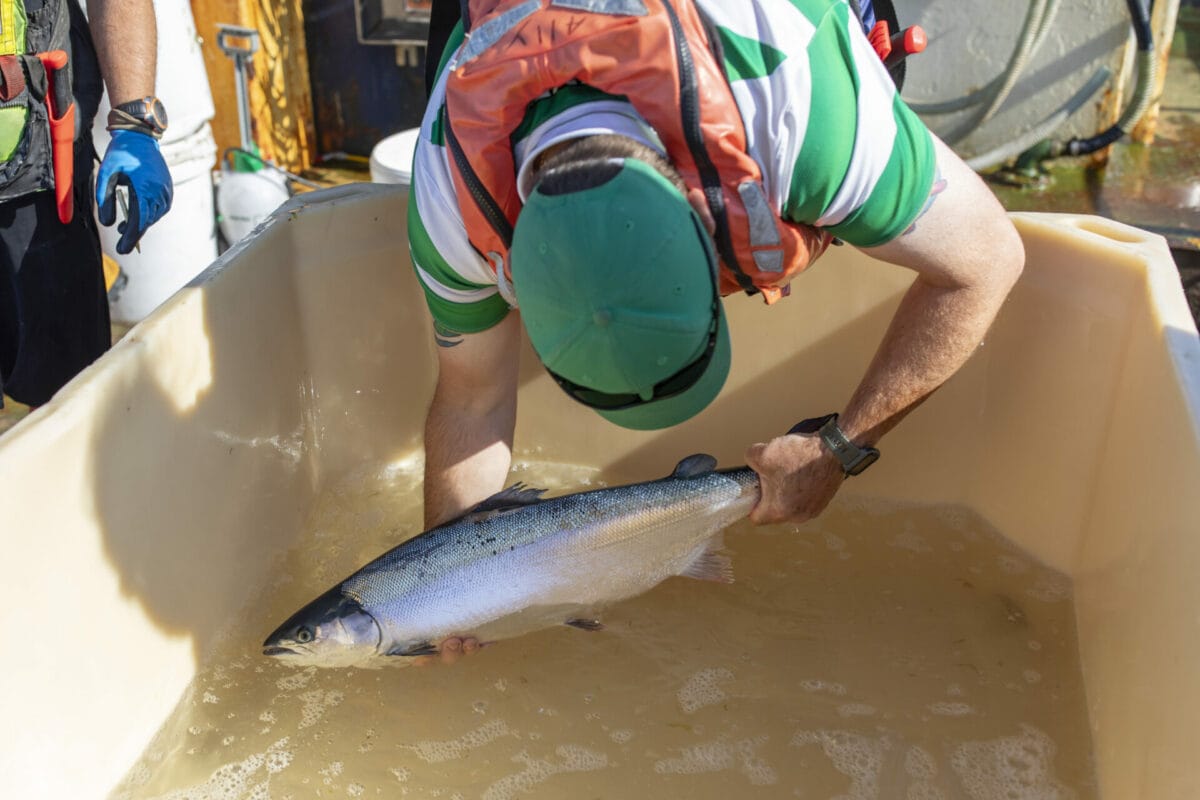
According to Bakkafrost, it was “incorrect” to infer that the 19 farms presented a risk to wild salmon populations. “Sepa’s screening model does not use accurate farm data and relies on a single assumed average count for all sites in Scotland to calculate relative risk,” said the company’s biology director in Scotland, Dave Cockerill.
“The model does not consider successful sea lice management outcomes. Bakkafrost Scotland are experts in salmon husbandry and we have a track record of innovation, investment and resource to successfully minimise sea lice.”
Fish farm companies to keep new regulation ‘under constant review’
Salmon Scotland, which represents salmon farming companies, stressed that it supported regulation based on fact, evidence and sound science. It pointed out that a review commissioned by the Scottish Government in 2022 recommended better, streamlined regulation.
“Now the sector faces not that, but more regulation. Additionally for a new regulation, Sepa cannot explain how it will measure success,” said the industry group’s chief executive, former Liberal Democrat minister and party leader, Tavish Scott.
“The Scottish Government has previously identified more than 40 pressures on wild salmon stocks, of which sea lice is just one. We are still waiting to see what government and its many agencies are going to do on the other identified pressures.”
He added: “Salmon Scotland and its member companies will keep this new regulation under constant review.”
The Scottish Environment Protection Agency argued that Scotland was one of the first countries to take action to manage the risk posed by lice from fish farms.
“The sea lice framework is a crucial step forward and employs a proportionate, evidence-based regulatory approach to protect young salmon from the parasite,” said head of ecology, Peter Pollard.
“It will help to support the sustainable development of fish farming in Scotland by guiding development to the least sensitive locations, as well as providing an effective and efficient framework to assess risk and apply appropriate management measures.”
Pollard pointed out that the framework would apply from 1 February 2024 to any applications for new fish farms or for increases in the number of fish at existing farms on the west coast and in the Western Isles.
He added: “It will sit alongside Sepa’s wider regulation introduced in 2019, which already controls all discharges from marine fish farms to the water environment.”
Main image: Corin Smith
This Ferret story was also published in the Sunday National. Our partnerships with other media help us reach new audiences and become more sustainable as a media co-op. Join us to read all our stories and tell us what we should investigate next.








